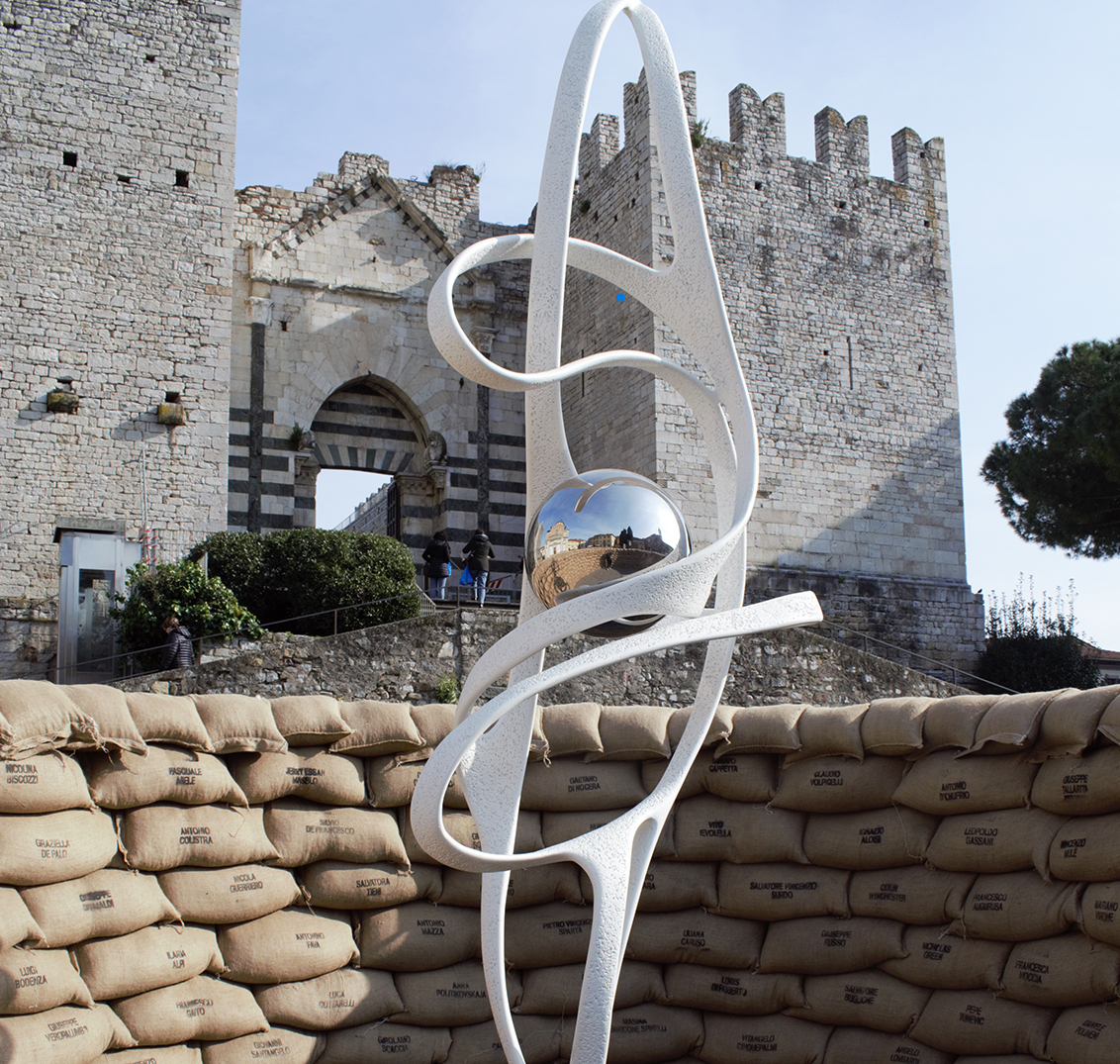
To commemorate the deaths caused by the massacres of Capaci and Via D’Amelio in Sicily in the early ‘90s, an installation called “The Spiral of Life” and the photograph exhibition “Novantadue” by Tony Gentile are set up in downtown Prato through March 25.
THE SPIRAL OF LIFE (Spirale della Vita) outdoor installation. Piazza Santa Maria delle Carceri, Prato. Always accessible.
With 1400 jute sacks, which each carry the name of a victim of the Sicilian mafia, and a sculpture of four meters (13 ft.) high, the installation called “The Spiral of Life,” was formerly on display in Piazza Bologni in Palermo, Sicily. Those present during the unveiling of the installation in Tuscany included Prato’s mayor Matteo Biffoni and the city councilor for culture Simone Mangani.
The central sculpture, “My Free Thought,” dazzles the observer by its structure and its interactivity; it turns upward on an axis. The spiral of jute sacks around it, in its formal and social movement, evokes that within is a hidden vitality, that will survive not matter what one has to go through.
NOVANTADUE. Officina Giovani, Piazza dei Macelli 4, Prato. Open Monday – Friday: 9 am – 12 noon, Saturday-Sunday 3 – 7 pm. Super Green Pass required upon entrance.
Inaugurated by a conference with Angelo Corbo, the sole survivor of the Capaci bombing/massacre on May 23, 1992, the exhibition showcases work by photographer and photojournalist Tony Gentile. The photos vividly document the friendship of Giovanni Falcone and Paolo Borsellino, who were both heavily involved with the anti-mafia investigations, their presence at judge Rosario Livatino’s funeral, the massacres of Capaci and Via D’Amelio, and the victims immortalized under white sheets. What is also perfectly portrayed is daily life in Sicily during the 1990s, especially in Palermo.
Commneting the exhibition and the installation, Mayor Matteo Biffoni and the Councillor for Culture Simone Mangani said: “The main objective is to pass [this knowledge] on to the youngest among us—who were not born or were children during that period. The meaning of those deaths and these sandbags, a bulwark of defense of civil society against the barbarism of mafia and corruption. It is at the same time to celebrate their lives and their sacrifices.” (ted de veer)








